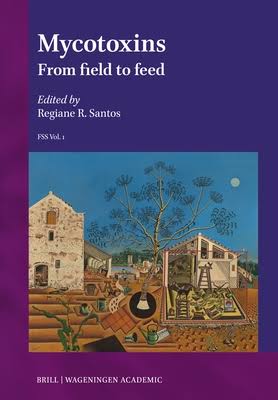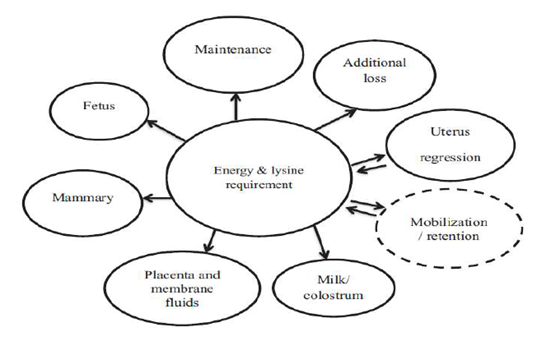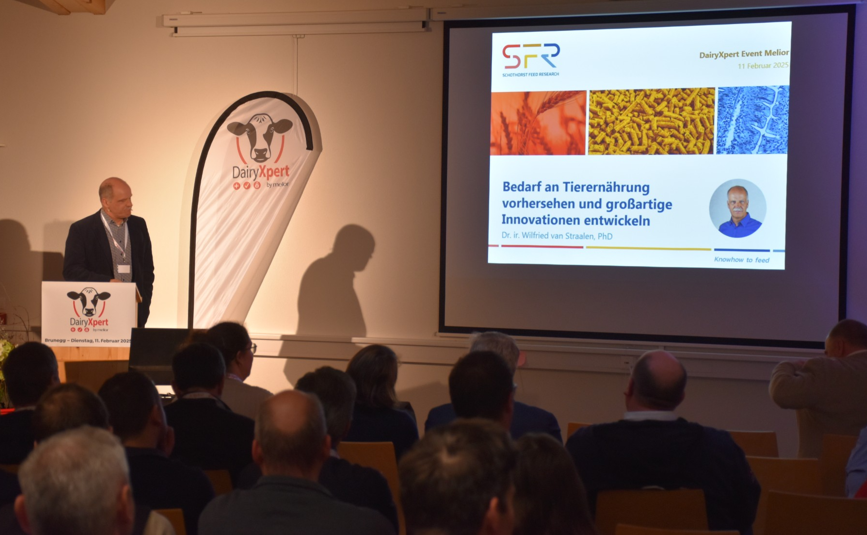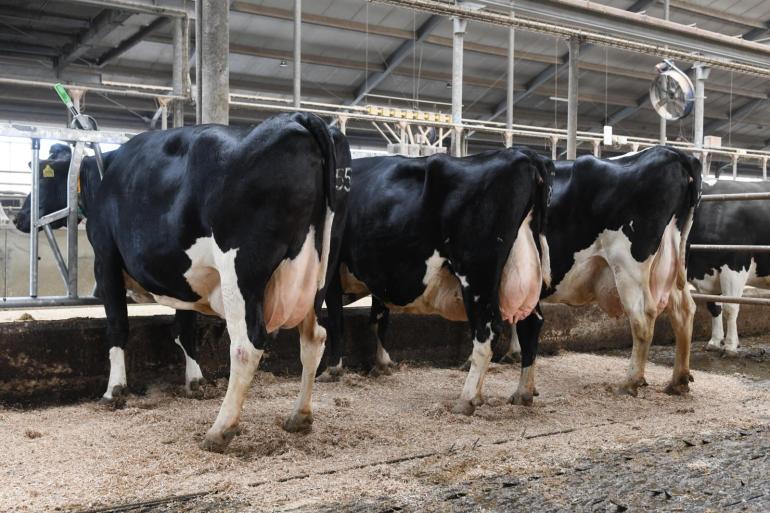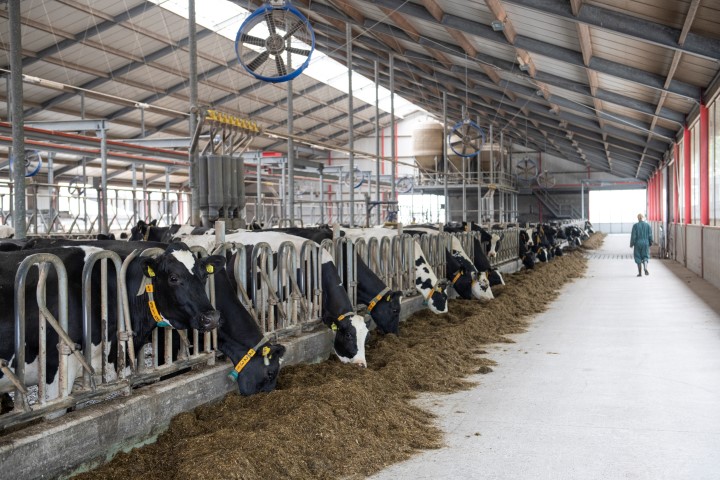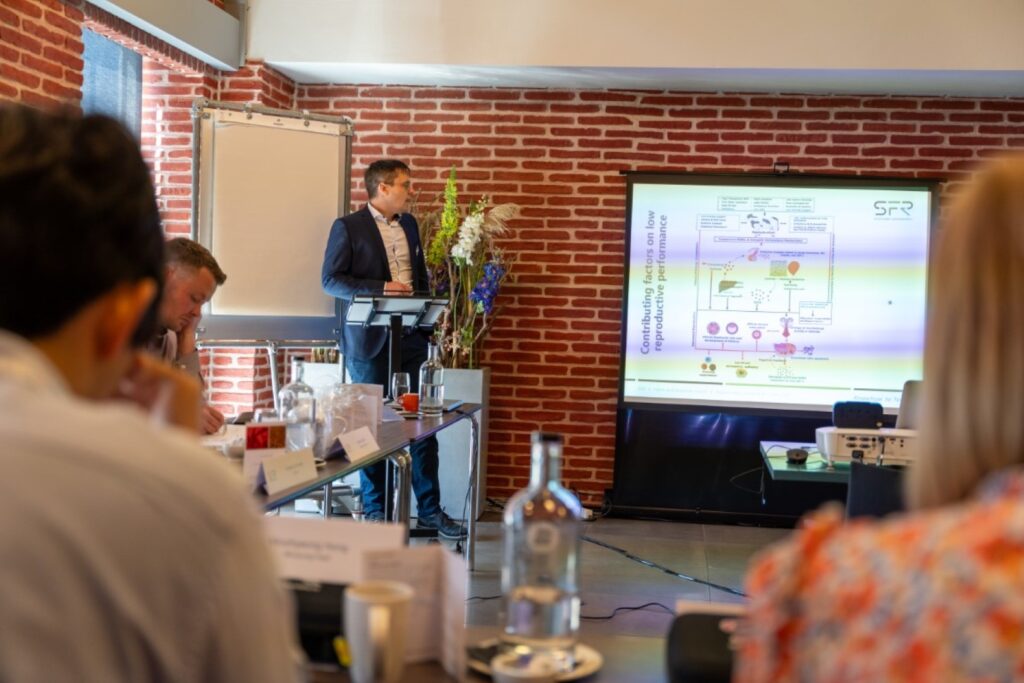News
SFR launches SSO Portal
Schothorst Feed Research (SFR) has launched the Single Sign On (SSO) portal for its customers. This new portal guarantees efficient information provision and offers customers a high level of convenience and user-friendliness, according to Wim Beeks, Sales & Consultancy Manager. “When our customers log in to the updated portal, they now have direct access to…
Read MoreUnique traineeship at Schothorst Feed Research
Schothorst Feed Research (SFR) is moving with the times. To remain future-proof and guarantee quality and expertise in animal nutrition, three energetic and ambitious trainees started on September 1st: Danique den Heijer, Maxime Landwier, and Noa Steendam. Wim Beeks, Manager Sales & Consultancy, initiated the traineeship at SFR. “At SFR, we offer the Advanced Feed…
Read MoreSchothorst Feed Research has its own podcast!
In addition to the webinars, seminars, training courses and education, Schothorst Feed Research is now also entering the world of podcasts, to share its knowledge with its customers in an accessible way. The podcast is hosted by Valeria Guerrero, Business Development Manager at Schothorst Feed Research. Each episode features a specialist from SFR and guests.…
Read MoreSFR researcher publishes book on mycotoxins
Regiane R. Santos, a senior researcher at Schothorst Feed Research, recently edited a book entitled ‘Mycotoxins: From Field to Feed’. With 15 years of experience in this field, Dr. Santos summarizes knowledge in this book based on realistic risks and inquiries from the field. Mycotoxins are toxins produced by fungi, and approximately 80% of animal…
Read MoreSFR SowModel offers unique possibilities
Schothorst Feed Research developed a sow model that nutritionists can use to easily map the needs of pregnant and lactating sows. “A unique tool that helps to assess and optimize sow feeds,” says Jan Fledderus Senior Consultant & Product Manager Swine. SFR is now ready to bring the model to the attention of the animal…
Read MoreNew Swiss animal feed concept based on SFR research
Last week, cattle consultant Wilfried van Straalen spoke during the launch of DairyXpert by Melior in Switzerland. DairyXpert’s nutritional advice is based on research and experiences from SFR. Wilfried van Straalen said in his lecture that high-performing cows are more sensitive to metabolic diseases such as ketosis or milk fever because of their high milk…
Read MoreDe Schothorst Elze 220 fiftieth 100,000 kg milk cow
Last month our De Schothorst Elze 220 passed the 100,000 kg milk mark. This makes the Dakota daughter the fiftieth cow to achieve this milestone. The Dutch magazine Veeteelt photographed the three hundred-tonners present and wrote an article about them. You can read it via this link. (in dutch)
Read MoreSchothorst Feed Research provides insight into ration performance with new software
Schothorst Feed Research (SFR) has chosen A-Systems’ Ruminix software to implement its cutting-edge E-dairy rationing model. Optimizing dairy cattle rations worldwide can become simpler. SFR has developed a proprietary rationing model that predicts milk yield based on specific feed inputs. Producers can handle both nutrition and production efficiency. “We were looking for a ration calculation program in…
Read MoreOwn budget leads to great innovations
For four years now, SFR has had its own innovation budget to initiate researchers itself. SFR employees can submit an idea. A scientific team then collects this, asks for further substantiation and ultimately allocates a budget. Head of R&D at SFR, Francesc Molist, talks about the steps taken in 2024 and the plans for next…
Read MoreEducational Services full of plans for 2025
After a year full of seminars, webinars, courses and training, the Educational Services team is already ready for 2025. Because sitting back after a successful year is not an option. The product manager of Educational Services, Karin van de Belt, is busy with plans for 2025. First, a brief look back at 2024. A first…
Read More


